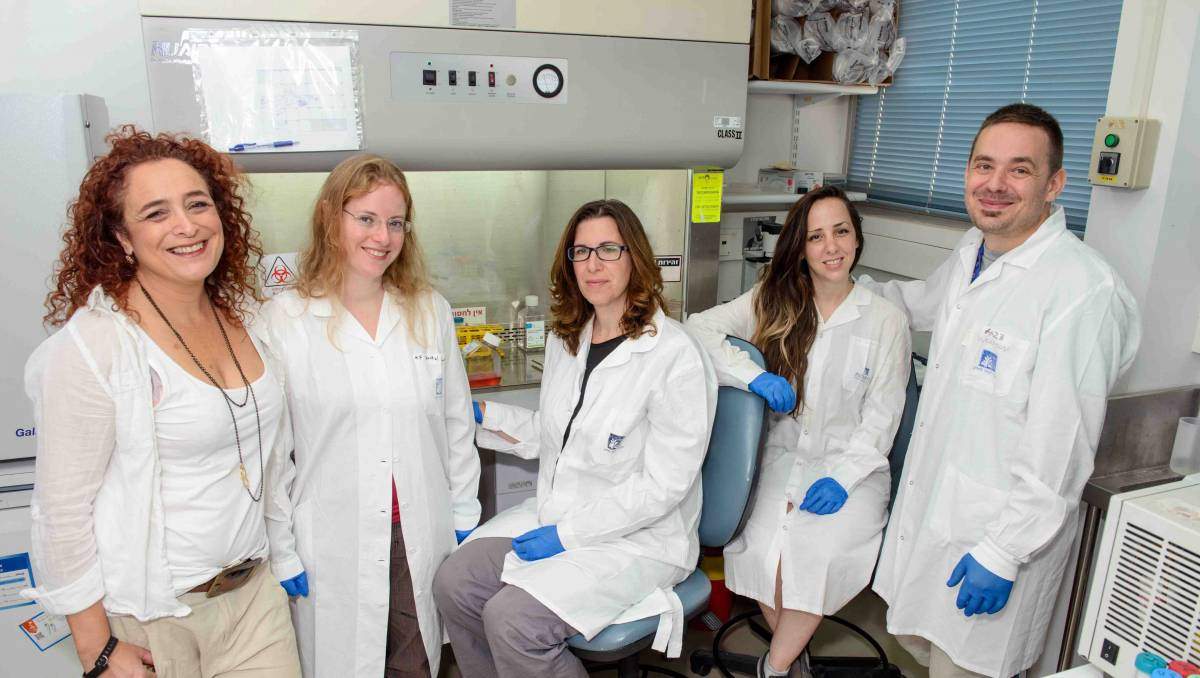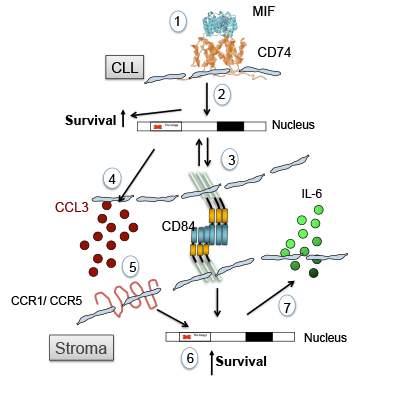Are you a journalist? Please sign up here for our press releases
Subscribe to our monthly newsletter:
In the most common form of leukemia, chronic lymphocytic leukemia, or CLL, immune system B cells refuse to die, eventually clogging the bone marrow and the lymph and blood vessels. But when these same cells are removed from the body into a lab dish, they expire within a few days. “This suggests that something in the cells’ environment acts as a support system, keeping them alive,” says the Weizmann Institute of Science’s Prof. Idit Shachar. She and her group in the Institute’s Immunology Department have identified a protein that lets the cancer cells and their neighbors engage in a “secret handshake” that tells the cells to turn on their long-term survival programs.
“B cells live a cosseted life in the bone marrow,” says Shachar. “They have their own special niches, and they are in constant communication with the stromal cells that line these niches. As the B cells move through the lymph system, they continue to enjoy a pampering microenvironment. In recent years we have come to realize that such microenvironments often play a crucial role in the development of the cancer.” In other words, although cancer may start with mutations in the DNA within a cell, a support team is required for the cancer to develop and persist in its progression within the body. Thus, understanding how a cancer cell interacts with its microenvironment may literally lead to new methods of cutting off its “life support.”

In a series of experiments, the latest reported in Oncogene, Shachar and her group, including researchers from the Weizmann Institute’s Veterinary Resources, Sourasky Medical Center, Kaplan Medical Center and Laniado Hospital, identified a protein called CD84 that is found in abundance on the outer membrane of cancerous B cells. They first showed that the protein helps the cancer survive; its position on the outer membrane of the cell suggested it engages in communication with other cells. The researchers next found that certain stromal cells within the niches in the bone marrow produced an identical protein on their outer membranes, creating it in copious amounts when the B cells were cancerous.
Further investigation revealed that the copies of CD84 on these neighboring cells reach out and touch one another. It is the physical contact that acts as a signal: Both cells respond by initiating an internal survival program. As the cancer and stromal cells continue reaching out to one another, the cells also begin secreting “messenger” molecules into the environment that reinforce the “stay alive” message.
Microenvironments often play a crucial role in the development of the cancer
Shachar and her group managed to prevent the cells from getting in touch: They developed an antibody to CD84 and tested it in a variety of lab settings, from tumor cells taken from CLL patients to mice with human cancers. In these experiments, the cancer cells died out, just as they do in the lab dish.
“Preventing these cells from attaining immortality could be especially useful in the bone marrow, where they are protected and therefore harder to kill. When they don’t get the “stay alive” message, the cells are released from their niches into the bloodstream, where chemotherapy drugs can get to them and take them out,” explains Shachar.

Shachar and her team are continuing to investigate the CD84 protein: What instigates these extremely high levels of CD84 production in the two types of cell? What exactly is the message it passes along and how does this play out in the cells?
“More research is needed before we can understand the exact nature of the communication between the cancer cells and their microenvironment,” she says. “In the future, we hope our approach to understanding the support that cancer cells get from their next-door neighbors may help us get a clearer picture of how cancer develops and to present new targets for treating various cancers.”